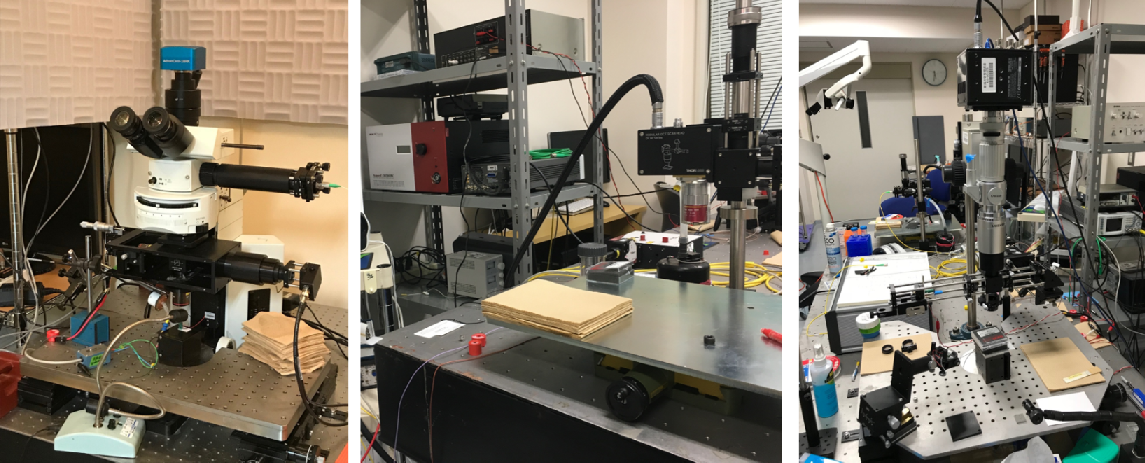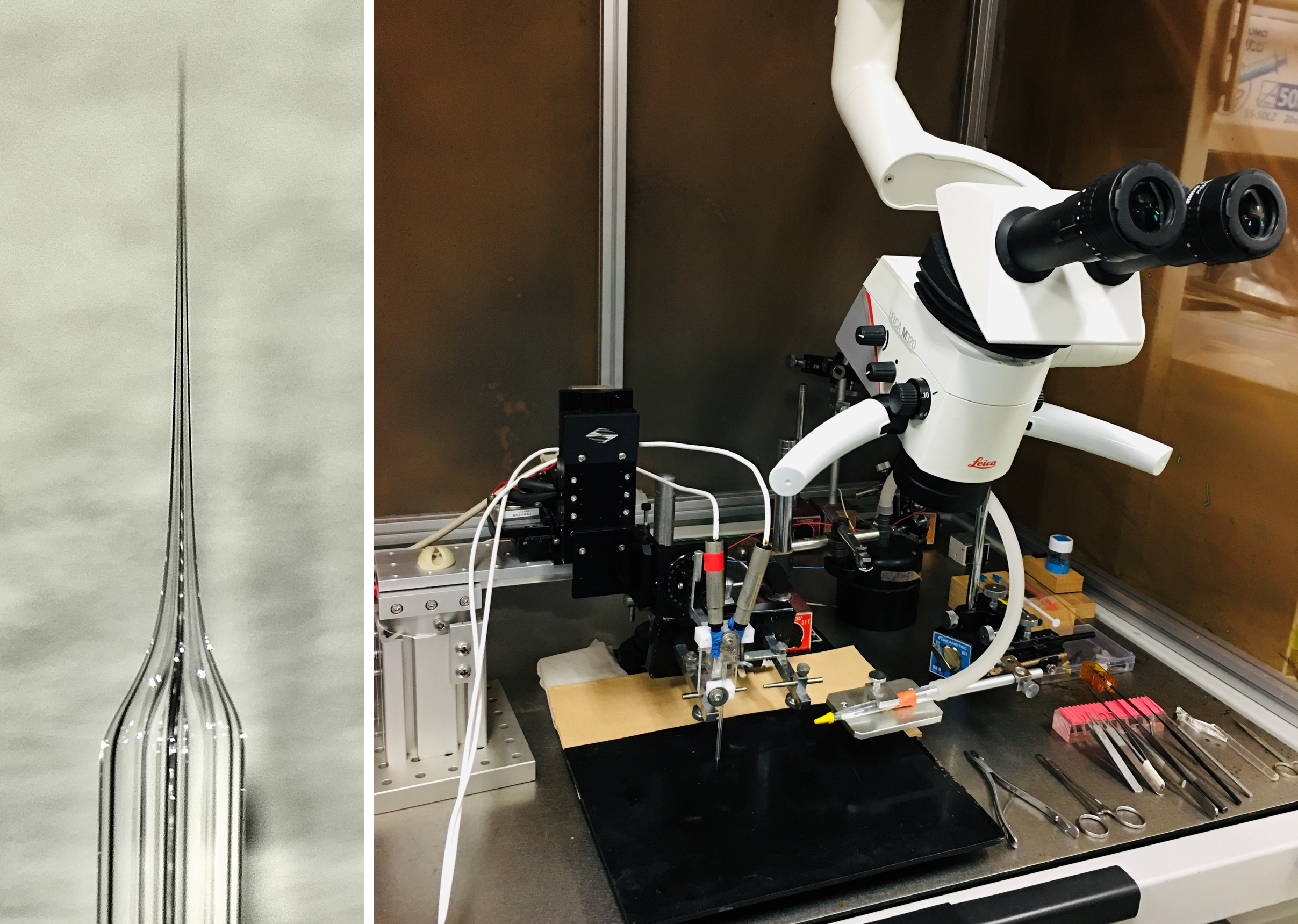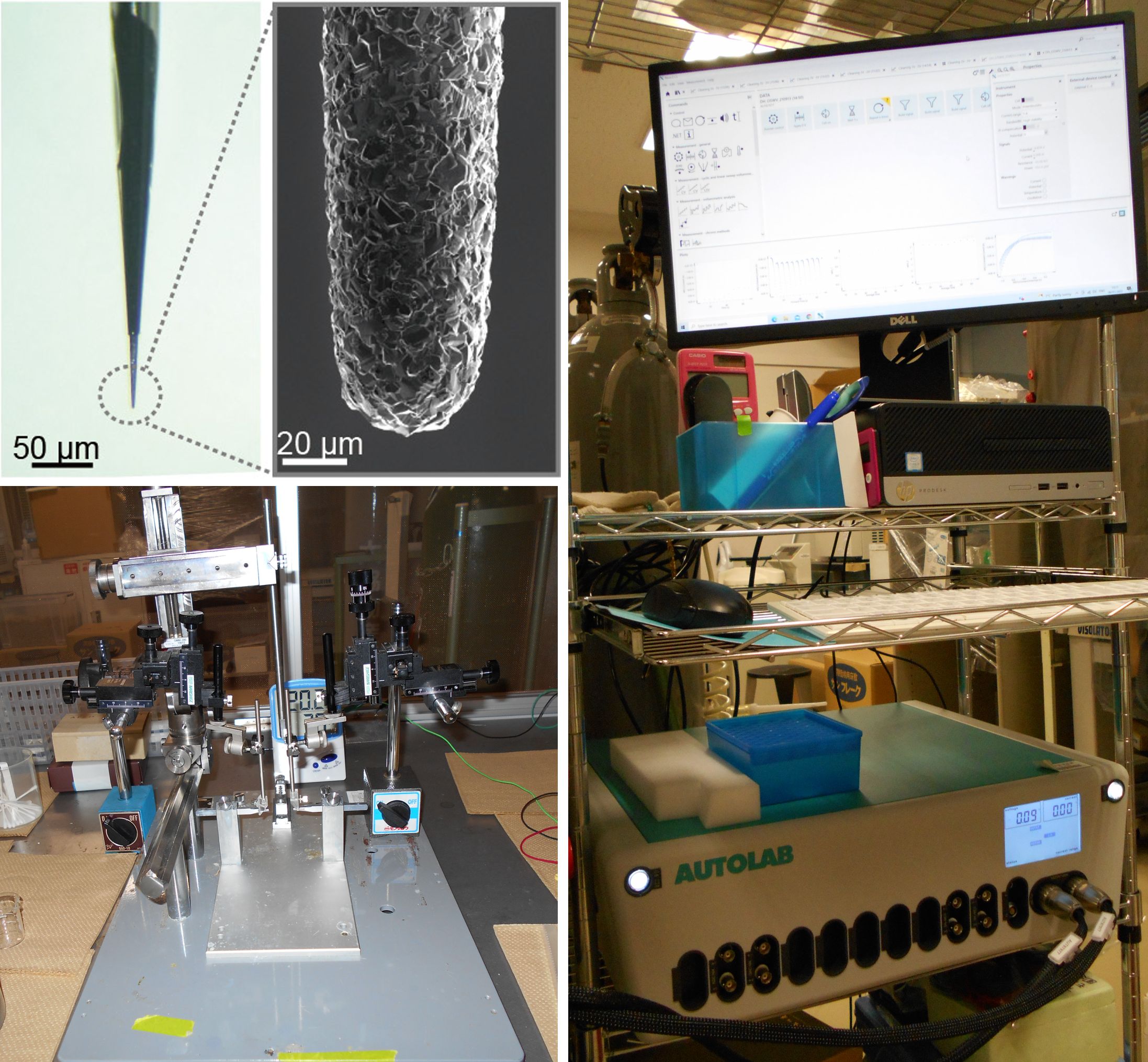We construct or develop majority of key analytical instruments by ourselves and carry out unique measurements. We also perform a variety of molecular biological and histological experiments.
VibrometersProject: Nanoscale Vibrations in Cochlear Sensory Epithelium
We have a couple of different vibrometers based on interferometry to measure nanoscale motions in the cochlear sensory epithelium. The setups and computer programs have been made by our group.
Laser Interferometer described in the left panel can accurately measure small vibrations at a single point of the target with limit of detection of ~20 pm (abiotic sample). Note that this system is unable to take any tomographic images. The methodology and algorithm for the measurements differ from those in commercially available interferometers; our interferometer can simultaneously detect not only sinusoidal vibrations (AC motion) but also a particular parameter, static offset (DC motion).
Optical Coherence Tomography (OCT) or optical echography, which is displayed in the center panel, can take tomographic images of sample in depth direction (z-axis) by radiation of a laser beam while measuring nanoscale vibrations. Scanning of this beam toward x and y axes results in construction of three-dimensional images. Labeling of the sample for visualization is not necessary. The instrument, which was purchased from THORLABS, is being modified by our group.
MS en-face OCT shown in the right panel allows us to take 3D image of the sample without any fluorescent labeling and detect at once nanoscale vibrations in a planner full-field. This state-of-the-art apparatus is being developed by Dr. Samuel Choi, an associate professor in Department of Engineering, Niigata University. We are currently making every effort to improve the performance of the en-face OCT.

Ion Selective MicroelectrodesProject: Biological Battery in the Cochlea
Ion Selective Microelectrodes are fabricated in our lab from commercially available double-barreled glass capillaries. Tip diameter of the microelectrode is 1 – 3 µm. The tip of one barrel is filled with a hydrophobic, K+-selective material, which is subjected to measurement of [K+]. The other barrel, which contains an electrolyte solution, monitors potential. In other words, this microelectrode can track changes of ion concentrations and potential in the microenvironment ‘simultaneously and in real time’. To our knowledge, we are currently only one group that can analyze the electrochemical properties with the double-barreled ion selective microelectrode in the cochlea of live animals while perfusing drugs to the inner ear.

Computer SimulationProject: Biological Battery in the Cochlea
On the basis of experimental observations obtained by our and other groups, we developed a Computational Model that can reproduce the biological battery and the electrochemical properties in the cochlea. This called ‘Nin-Hibino-Kurachi (NHK) Model’ , which represents an electrical circuit integrating ion channels and transporters in the stria vascularis and hair cells, can simulate ion concentrations and potentials in extracellular and intracellular compartments of the cochlea under different conditions such as acoustic stimuli and hearing disorders by ototoxic drugs or diseases.

An Advanced Drug Monitoring SystemProject: Drug Monitoring Systems
The drug monitoring system developed by our group is equipped with two different microsensors: a needle-type Diamond Microsensor (tip diameter; 10−40 µm) fabricated by Einaga’s group in Keio University and a classical glass microelectrode (tip diameter; ~1 µm). This arrangement permits us to detect the local Pharmacokinetics and Pharmacodynamics ‘simultaneously and in real time’ in vivo. We are applying this approach to drug monitoring in a variety of organs including inner ear and brain.

Molecular Biological and Histological Instruments
Our group has instruments for PCR, real-time PCR, and western-blot (chemidoc), a fluorescent microscope, and a cryostat. These machines were purchased from commercial lines. We also harbor a cell culture room.






